1 of 43
Download to read offline
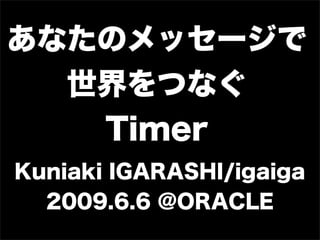
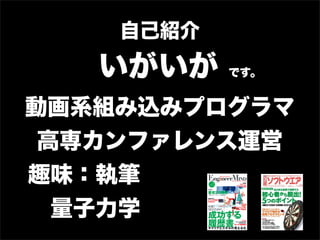
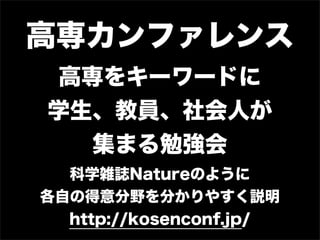

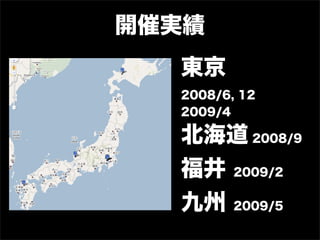
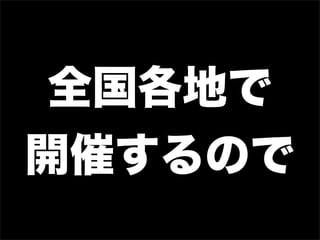
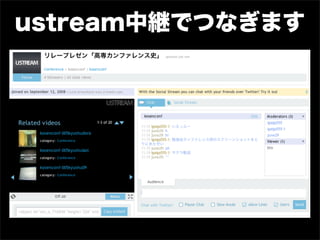
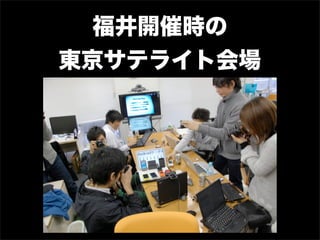
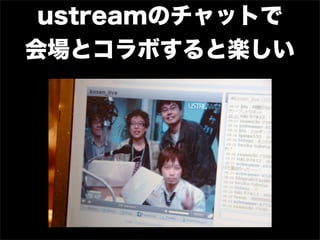

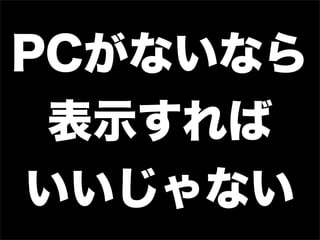
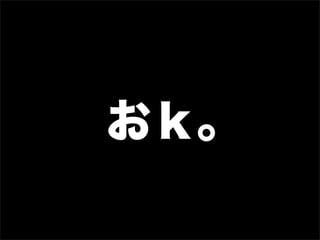

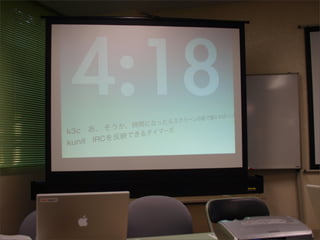
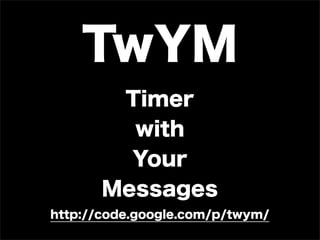


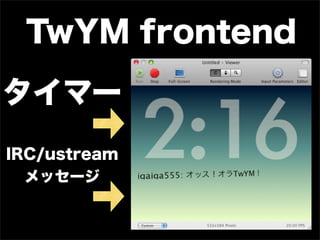
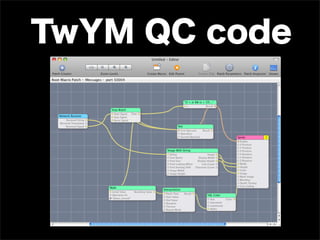
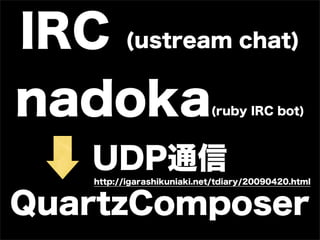
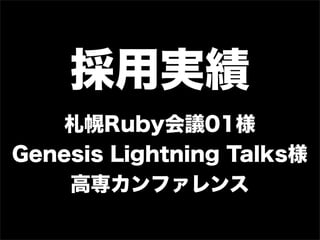

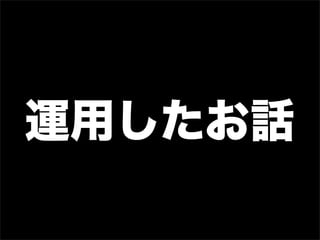
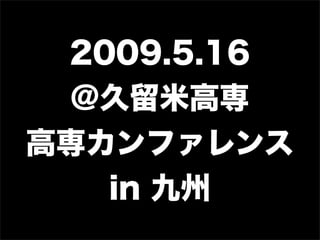
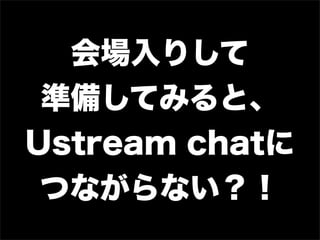
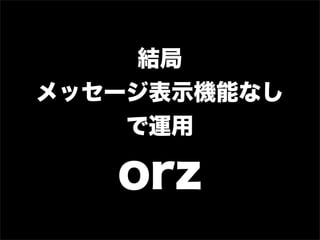

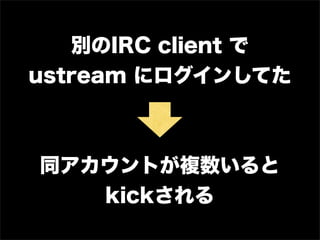
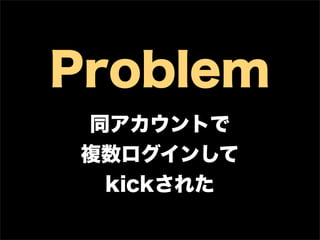

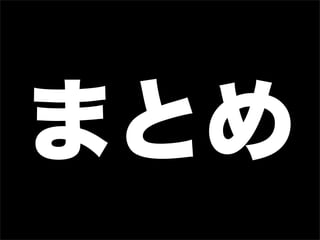
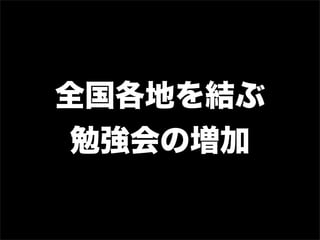
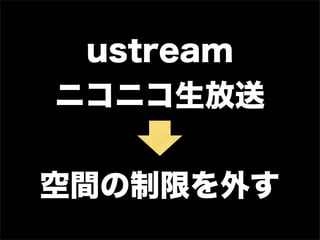
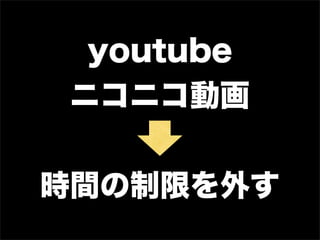

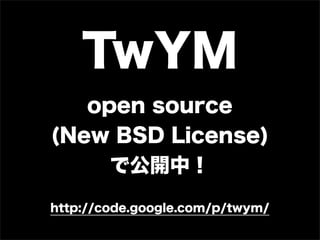
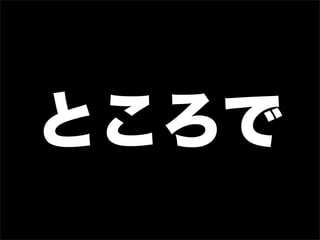
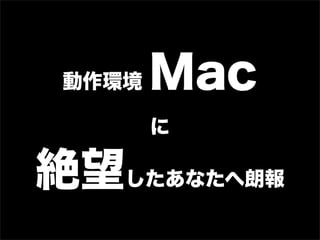
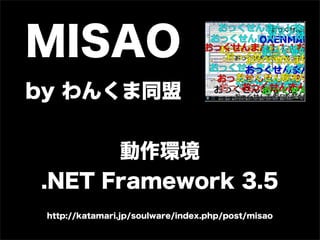
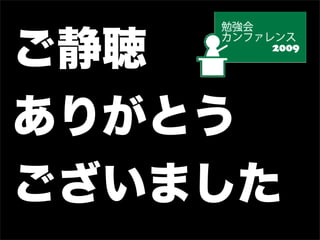
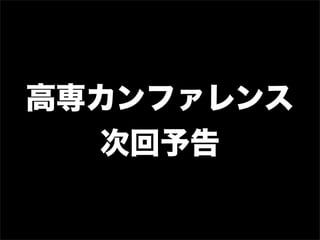

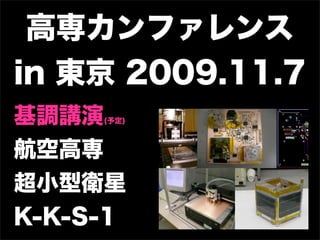
Ad
Recommended
STPとその仲間たち ? STP, RSTP, MSTPの概要 ?
STPとその仲間たち ? STP, RSTP, MSTPの概要 ?Masahiko Kimoto
?
L2ネットワークにおける、冗長性確保とロープ回避のためのプロトコルである
STPと、その拡張であるRSTPとMSTPについて概説する。
インフラエンジニアのためのプレゼン技术
インフラエンジニアのためのプレゼン技术koedoyoshida
?
インフラエンジニアのためのプレゼン技术研究会(プレビュー版)
http://connpass.com/event/11739/
発表資料抜粋FREE ME! Project 狠狠撸show..
FREE ME! Project 狠狠撸show..Hasif Mustafa
?
The project proposal titled 'Free Me! (Stand for Freedom)' aims to address the concepts of freedom and self-expression through an interactive video art installation. It features a video of a woman with her mouth sealed, which changes to show her smiling and speaking when viewers step onto a designated spot, engaging them with publicly sourced opinions on freedom. The project's objective is to educate and motivate audiences about their rights to express themselves in a constrained environment.A2 Media Studies Evaluation - Question 1
A2 Media Studies Evaluation - Question 1katiejones1992
?
The document analyzes the conventions of romantic film trailers and how the student's media project trailer both followed and subverted some of these conventions. The trailer featured two main female characters instead of a typical male-female pairing. It used conventions like a moving storyline, emotional music, diegetic and non-diegetic sounds. However, it also subverted expectations by having two female leads and making the storyline intentionally more cliched than typical romantic films.Building MapAttack
Building MapAttackKyle Drake
?
This document discusses building a real-time geolocation game called MapAttack using the Geoloqi API and platform. It describes some initial issues encountered with the game server handling concurrent traffic and real-time updates. It then explains how using Node.js, EventMachine, and Geoloqi's publish/subscribe system helped address these issues by making the server asynchronous and event-driven. The document advocates for keeping relevant data outside persistent stores for better performance and discusses using high-performance hardware as an alternative to scaling database infrastructure. It promotes Geoloqi and building other real-time geolocation applications and games.Uafpug 8 Presentation Puremvc Papervision Gallery Kuriksha Dmitry
Uafpug 8 Presentation Puremvc Papervision Gallery Kuriksha DmitryMax Rozdobudko
?
Документ представляет собой подробное описание фреймворка PureMVC, основанного на мета-паттерне MVC, используемого для создания приложений. Рассматриваются ключевые компоненты фреймворка, такие как fa?ade, модели, виды и контроллеры, а также их взаимодействие через нотификации. Также упоминаются различные версии фреймворка для других языков программирования и описываются принципы проектирования и разработки приложений на его основе.FLAR Workflow
FLAR WorkflowJesse Freeman
?
Jesse Freeman is a technical architect with 10 years of Flash experience, specializing in Flash workflow and augmented reality (AR) applications. The document discusses the use of flartoolkit for integrating AR in Flash projects, detailing the setup process, creating 3D objects, and the importance of workflow tools to streamline development. Additionally, it highlights challenges in building AR apps and the future potential for advancements in AR technology.Blurts - PluggedIn NYC011210
Blurts - PluggedIn NYC011210PluggedIn
?
Blurts is an audio operating system (AOS) that allows users to create and share 15-second "Blurts" across social networks and publishers' websites. It aims to become an open standard for short-burst audio and enhance social networks with the emotion of voice. Blurts also provides tools to increase publishers' organic search and user-generated content through transcription and optimization of Blurt audio. The company plans to launch free consumer and celebrity services in 2010 to drive awareness and growth across social networks and its own website, Blurts.com.iMovie 9 or 11 Green Screen
iMovie 9 or 11 Green ScreenJon Corippo
?
This document provides a guide on using green screen techniques with iMovie, detailing essential equipment and steps for successful implementation. Key steps include preparing your background, shooting your footage, and ensuring the correct order of uploading clips to avoid issues. Additional tips include using a tripod and adjusting camera settings to maintain quality.3 d virtual studio present
3 d virtual studio presentApichart Thapphangthiam
?
??????????????????????????????? LTM 633
???????????????? ???????????????????????????????????????
??????????????????????????????????
?????????????????????????????????????PureMVC and Papervision
PureMVC and PapervisionDmitry Kuriksha
?
Документ представляет собой обзор open-source фреймворка PureMVC, который основан на мета-паттерне MVC и предназначен для создания приложений. В нем описываются основные компоненты и архитектура фреймворка, а также шаги по проектированию и реализации приложений с использованием PureMVC, включая создание фасадов, прокси и медиаторов. Дополнительно рассматриваются возможности мультикорной архитектуры и важные аспекты взаимодействия компонентов через уведомления.Blackmagic Design ATEM Series
Blackmagic Design ATEM SeriesAV ProfShop
?
This document is an installation and operation manual for ATEM production switchers. It introduces the ATEM switcher and explains what an M/E (Mix Effects) switcher is. It provides instructions for plugging in equipment like cameras, control panels, and monitors. It also explains how to install and use the ATEM software control panel and update the switcher's software. The manual covers setting up and operating the switcher, including features like transitions, keying effects, and auxiliary outputs.Audition key scene analysis
Audition key scene analysisHeath Park, Wolverhampton
?
The document provides a detailed analysis of key scenes between Aoyama and Asami, focusing on their emotional states and interactions, particularly concerning a phone call. It examines various shots, narrative tension, and soundscapes that illustrate Aoyama's indecision and Asami's mysterious presence. The analysis highlights the significance of visual and auditory elements in conveying the characters' psychological dynamics.Green screen presentation
Green screen presentationpaulfuller75
?
This document discusses using green screen filmmaking in the classroom. It explains what chromakey is and how it works. It provides tips on setting up backgrounds, lighting, cameras, and editing software to create green screen videos. Examples of potential backgrounds include painted surfaces, fabric, paper, and projected screens. The document recommends diffuse lighting that separately illuminates the background and subject. It also provides tips for shooting, such as using tripods, taking multiple takes from different camera angles, and placing markers. The last sections demonstrate green screening in iMovie and offer additional tips and tricks.LEAP MOTION
LEAP MOTIONKing Mongkut's University of Technology Thonburi
?
LEAP MOTION
Present
Assist. Dr.Surapon Boonlue
By
Thuchcha Pankeaw 57080702017
Patipat Noonart 57080702018
LTM 633 Advance Graphic
King Mongkut's University of Technology ThonburiGreen screen Technology
Green screen Technologyleahgreenbaum
?
Green screen technology, also known as chroma keying, allows scenes to be filmed against a solid color background that is later replaced digitally. This technique first emerged in the 1930s using blue screens but switched to green screens in the 1970s as cameras became more sensitive to green. The use of green screens revolutionized film production by allowing complex backgrounds to be added during editing, reducing location filming and costs. It also enabled genres like science fiction to film in studios and composite futuristic settings. Overall, green screen technology significantly lowered production expenses and expanded creative possibilities for visual effects.Quartz: What is it?
Quartz: What is it?alesialucy14
?
Quartz is a mineral composed mainly of silicon dioxide that is the second most abundant mineral on Earth. It can be found in various colors depending on impurities and is found worldwide in all types of rock. A large quartz vein was discovered in Gwinnett County, Georgia in 2008. Quartz has many uses including as a gemstone, in electronics due to its piezoelectric properties, and as the base material for many computer chips.Task 2A Chroma Key LM
Task 2A Chroma Key LM liaxchristie
?
This document discusses the use of green screen techniques in music videos. It provides several examples of how green screen was used in videos by Beyonce, Christina Perri, and other artists to enhance the narrative and convey emotions. Green screen was layered with different backgrounds, colors, and multiple shots of the artists to count down, depict moods, and create settings that matched the lyrics. Bright colors and foggy/dark backgrounds helped set sad, angry, or powerful tones to match the feelings in the songs.Vst Virtual Studio Technology
Vst Virtual Studio TechnologyJonny Williams
?
- VST (Virtual Studio Technology) allows developers to create virtual instruments and effects that can be used within digital audio workstation (DAW) software, enabling a complete virtual music production studio.
- It was developed by Steinberg to allow third-party plugins that could be loaded and used within host DAW applications. Plugins can send and receive MIDI data.
- There are two main types of DAWs - computer-based which use a computer, soundcard, and software, and integrated which combine mixing console, audio converter, and storage in one device. VST expanded DAW capabilities by enabling virtual plugins.virtual studio
virtual studioFeras Ajjawi
?
Thank you for the presentation. Please let me know if you have any other questions.Designers Pit 01 Origamiを使ったプロトタイプ作成を学ぼう
Designers Pit 01 Origamiを使ったプロトタイプ作成を学ぼうRyo Yoshitake
?
イベントページ:http://connpass.com/event/5507/
近年、モバイルアプリの世界において、1枚のデザインカンプや切り出した画像リソースを用いて、擬似的に動くプロトタイプを作り出せるツール?サービスが登場しています。
これによってデザイナーでも手軽にプロトタイピングのサイクルを作れるようになりましたが、まだまだインタラクションを伴った成果物を作るのは難しく、また環境も整っていません。
このワークショップではFacebookデザインチームが開発したQuartz Composer用ツールキット「Origami」について学び、インタラクティブなプロトタイプの作成を体験して頂けます。my_everyday_life_with_ruby
my_everyday_life_with_rubyKuniaki Igarashi
?
This document summarizes Kuniaki Igarashi's everyday life with Ruby. It discusses the tools he uses like Web Console, Chrome Developer Tools, byebug and footnotes. It also describes some small Ruby projects he created, like a weather notification script and Candy Bottle for collecting tweets about him. The document ends by explaining his hobby of contributing test cases to Ruby Core by sending pull requests with new tests.More Related Content
Viewers also liked (20)
A2 Media Studies Evaluation - Question 1
A2 Media Studies Evaluation - Question 1katiejones1992
?
The document analyzes the conventions of romantic film trailers and how the student's media project trailer both followed and subverted some of these conventions. The trailer featured two main female characters instead of a typical male-female pairing. It used conventions like a moving storyline, emotional music, diegetic and non-diegetic sounds. However, it also subverted expectations by having two female leads and making the storyline intentionally more cliched than typical romantic films.Building MapAttack
Building MapAttackKyle Drake
?
This document discusses building a real-time geolocation game called MapAttack using the Geoloqi API and platform. It describes some initial issues encountered with the game server handling concurrent traffic and real-time updates. It then explains how using Node.js, EventMachine, and Geoloqi's publish/subscribe system helped address these issues by making the server asynchronous and event-driven. The document advocates for keeping relevant data outside persistent stores for better performance and discusses using high-performance hardware as an alternative to scaling database infrastructure. It promotes Geoloqi and building other real-time geolocation applications and games.Uafpug 8 Presentation Puremvc Papervision Gallery Kuriksha Dmitry
Uafpug 8 Presentation Puremvc Papervision Gallery Kuriksha DmitryMax Rozdobudko
?
Документ представляет собой подробное описание фреймворка PureMVC, основанного на мета-паттерне MVC, используемого для создания приложений. Рассматриваются ключевые компоненты фреймворка, такие как fa?ade, модели, виды и контроллеры, а также их взаимодействие через нотификации. Также упоминаются различные версии фреймворка для других языков программирования и описываются принципы проектирования и разработки приложений на его основе.FLAR Workflow
FLAR WorkflowJesse Freeman
?
Jesse Freeman is a technical architect with 10 years of Flash experience, specializing in Flash workflow and augmented reality (AR) applications. The document discusses the use of flartoolkit for integrating AR in Flash projects, detailing the setup process, creating 3D objects, and the importance of workflow tools to streamline development. Additionally, it highlights challenges in building AR apps and the future potential for advancements in AR technology.Blurts - PluggedIn NYC011210
Blurts - PluggedIn NYC011210PluggedIn
?
Blurts is an audio operating system (AOS) that allows users to create and share 15-second "Blurts" across social networks and publishers' websites. It aims to become an open standard for short-burst audio and enhance social networks with the emotion of voice. Blurts also provides tools to increase publishers' organic search and user-generated content through transcription and optimization of Blurt audio. The company plans to launch free consumer and celebrity services in 2010 to drive awareness and growth across social networks and its own website, Blurts.com.iMovie 9 or 11 Green Screen
iMovie 9 or 11 Green ScreenJon Corippo
?
This document provides a guide on using green screen techniques with iMovie, detailing essential equipment and steps for successful implementation. Key steps include preparing your background, shooting your footage, and ensuring the correct order of uploading clips to avoid issues. Additional tips include using a tripod and adjusting camera settings to maintain quality.3 d virtual studio present
3 d virtual studio presentApichart Thapphangthiam
?
??????????????????????????????? LTM 633
???????????????? ???????????????????????????????????????
??????????????????????????????????
?????????????????????????????????????PureMVC and Papervision
PureMVC and PapervisionDmitry Kuriksha
?
Документ представляет собой обзор open-source фреймворка PureMVC, который основан на мета-паттерне MVC и предназначен для создания приложений. В нем описываются основные компоненты и архитектура фреймворка, а также шаги по проектированию и реализации приложений с использованием PureMVC, включая создание фасадов, прокси и медиаторов. Дополнительно рассматриваются возможности мультикорной архитектуры и важные аспекты взаимодействия компонентов через уведомления.Blackmagic Design ATEM Series
Blackmagic Design ATEM SeriesAV ProfShop
?
This document is an installation and operation manual for ATEM production switchers. It introduces the ATEM switcher and explains what an M/E (Mix Effects) switcher is. It provides instructions for plugging in equipment like cameras, control panels, and monitors. It also explains how to install and use the ATEM software control panel and update the switcher's software. The manual covers setting up and operating the switcher, including features like transitions, keying effects, and auxiliary outputs.Audition key scene analysis
Audition key scene analysisHeath Park, Wolverhampton
?
The document provides a detailed analysis of key scenes between Aoyama and Asami, focusing on their emotional states and interactions, particularly concerning a phone call. It examines various shots, narrative tension, and soundscapes that illustrate Aoyama's indecision and Asami's mysterious presence. The analysis highlights the significance of visual and auditory elements in conveying the characters' psychological dynamics.Green screen presentation
Green screen presentationpaulfuller75
?
This document discusses using green screen filmmaking in the classroom. It explains what chromakey is and how it works. It provides tips on setting up backgrounds, lighting, cameras, and editing software to create green screen videos. Examples of potential backgrounds include painted surfaces, fabric, paper, and projected screens. The document recommends diffuse lighting that separately illuminates the background and subject. It also provides tips for shooting, such as using tripods, taking multiple takes from different camera angles, and placing markers. The last sections demonstrate green screening in iMovie and offer additional tips and tricks.LEAP MOTION
LEAP MOTIONKing Mongkut's University of Technology Thonburi
?
LEAP MOTION
Present
Assist. Dr.Surapon Boonlue
By
Thuchcha Pankeaw 57080702017
Patipat Noonart 57080702018
LTM 633 Advance Graphic
King Mongkut's University of Technology ThonburiGreen screen Technology
Green screen Technologyleahgreenbaum
?
Green screen technology, also known as chroma keying, allows scenes to be filmed against a solid color background that is later replaced digitally. This technique first emerged in the 1930s using blue screens but switched to green screens in the 1970s as cameras became more sensitive to green. The use of green screens revolutionized film production by allowing complex backgrounds to be added during editing, reducing location filming and costs. It also enabled genres like science fiction to film in studios and composite futuristic settings. Overall, green screen technology significantly lowered production expenses and expanded creative possibilities for visual effects.Quartz: What is it?
Quartz: What is it?alesialucy14
?
Quartz is a mineral composed mainly of silicon dioxide that is the second most abundant mineral on Earth. It can be found in various colors depending on impurities and is found worldwide in all types of rock. A large quartz vein was discovered in Gwinnett County, Georgia in 2008. Quartz has many uses including as a gemstone, in electronics due to its piezoelectric properties, and as the base material for many computer chips.Task 2A Chroma Key LM
Task 2A Chroma Key LM liaxchristie
?
This document discusses the use of green screen techniques in music videos. It provides several examples of how green screen was used in videos by Beyonce, Christina Perri, and other artists to enhance the narrative and convey emotions. Green screen was layered with different backgrounds, colors, and multiple shots of the artists to count down, depict moods, and create settings that matched the lyrics. Bright colors and foggy/dark backgrounds helped set sad, angry, or powerful tones to match the feelings in the songs.Vst Virtual Studio Technology
Vst Virtual Studio TechnologyJonny Williams
?
- VST (Virtual Studio Technology) allows developers to create virtual instruments and effects that can be used within digital audio workstation (DAW) software, enabling a complete virtual music production studio.
- It was developed by Steinberg to allow third-party plugins that could be loaded and used within host DAW applications. Plugins can send and receive MIDI data.
- There are two main types of DAWs - computer-based which use a computer, soundcard, and software, and integrated which combine mixing console, audio converter, and storage in one device. VST expanded DAW capabilities by enabling virtual plugins.virtual studio
virtual studioFeras Ajjawi
?
Thank you for the presentation. Please let me know if you have any other questions.Designers Pit 01 Origamiを使ったプロトタイプ作成を学ぼう
Designers Pit 01 Origamiを使ったプロトタイプ作成を学ぼうRyo Yoshitake
?
イベントページ:http://connpass.com/event/5507/
近年、モバイルアプリの世界において、1枚のデザインカンプや切り出した画像リソースを用いて、擬似的に動くプロトタイプを作り出せるツール?サービスが登場しています。
これによってデザイナーでも手軽にプロトタイピングのサイクルを作れるようになりましたが、まだまだインタラクションを伴った成果物を作るのは難しく、また環境も整っていません。
このワークショップではFacebookデザインチームが開発したQuartz Composer用ツールキット「Origami」について学び、インタラクティブなプロトタイプの作成を体験して頂けます。More from Kuniaki Igarashi (20)
my_everyday_life_with_ruby
my_everyday_life_with_rubyKuniaki Igarashi
?
This document summarizes Kuniaki Igarashi's everyday life with Ruby. It discusses the tools he uses like Web Console, Chrome Developer Tools, byebug and footnotes. It also describes some small Ruby projects he created, like a weather notification script and Candy Bottle for collecting tweets about him. The document ends by explaining his hobby of contributing test cases to Ruby Core by sending pull requests with new tests.世界のどこかで楽しく搁耻产测でお仕事するために
世界のどこかで楽しく搁耻产测でお仕事するためにKuniaki Igarashi
?
This Ruby script iterates through all files in the current directory and its subdirectories, prints the file path and line number for any line that contains non-ASCII characters, and excludes lines that contain only ASCII characters. It uses regular expressions to check for non-ASCII character presence in each line.World Wide Ruby Conferences
World Wide Ruby ConferencesKuniaki Igarashi
?
This document summarizes a presentation about various Ruby conferences around the world. It introduces five lightning talks that will be given by organizers of RubyConf/Kaigi events: Pat Allan will talk about Rails Camps, Chad Fowler will talk about RubyConf, Jiang Wu will talk about RubyConf China, Daniel Bovensiepen will talk about EuRuKo, and Masayoshi Takahashi will talk about RubyKaigi. The presenter encourages questions after each talk and organizing a group to attend the community night party.高専カンファレンス 014東京 予告編
高専カンファレンス 014東京 予告編Kuniaki Igarashi
?
The document discusses the N-body problem in physics, which aims to describe the motion of a group of celestial objects that interact with each other gravitationally. It notes that the problem cannot be solved analytically except in some special cases. Numerical methods are required to calculate the trajectories of bodies and their interactions over time.Cafe igaigaKuniaki Igarashi
?
Das Dokument enth?lt Informationen über Kuniaki Igarashi und verweist auf mehrere Daten und m?glicherweise Künstlernamen. Es scheint sich um eine Art Archiv oder Notiz zu handeln, die auch Verbindungen zu einem Café und anderen Personen herstellt. Die genauen Inhalte und der Kontext bleiben unklar.高専カンファレンスについて @kosenconf-012hachinohe
高専カンファレンスについて @kosenconf-012hachinoheKuniaki Igarashi
?
2010.1.30 高専カンファレンスin八戸
http://kosenconf.jp/?012hachinoheTimeTableRubyKaigi Lightning Talks TwYM episode2
RubyKaigi Lightning Talks TwYM episode2Kuniaki Igarashi
?
Ruby会議2009 Lightning Talks 前説 IRC メッセージ表示機能付きタイマー "TwYM" ( 日本語 + English )RubyKaigi Lightning Talks TwYM episode1
RubyKaigi Lightning Talks TwYM episode1Kuniaki Igarashi
?
Ruby会議2009 Lightning Talks 前説 IRC メッセージ表示機能付きタイマー "TwYM" ( 日本語 + English )Ad
Recently uploaded (7)
Ad
TwYM
- 1. あなたのメッセージで 世界をつなぐ Timer Kuniaki IGARASHI/igaiga 2009.6.6 @ORACLE
- 2. 自己紹介 ? いがいが です。 動画系組み込みプログラマ 高専カンファレンス運営 ?趣味:執筆 ??量子力学
- 3. 高専カンファレンス 高専をキーワードに 学生、教員、社会人が 集まる勉強会 科学雑誌Natureのように 各自の得意分野を分かりやすく説明 http://kosenconf.jp/
- 4. 高専カンファレンス発表ダイジェスト 流体力学を使ってはてなのサーバを自作 高専プロコン作品「コエラリ」の紹介 漫画コマ割支援アプリ開発 学習型マッサージチェア開発 OpenIDでWebの認証をもっと便利に 化学実験LT(ビタミンの紫外線発光) 量子力学と量子暗号の簡単なおはなし 地震の研究 スピントロニクス研究
- 5. 開催実績 東京 2008/6, 12 2009/4 北海道 2008/9 福井 2009/2 九州 2009/5
- 6. 全国各地で 開催するので
- 12. おk。
- 13. つくった。
- 15. TwYM Timer with Your Messages http://code.google.com/p/twym/
- 16. TwYM IRCメッセージを表示できるタイマー 动作环境 Mac OS X Leopard Quartz Composer ruby 1.8.6
- 17. Quartz Composer macに標準で入ってる グラフィカルなデモを作成できる 開発環境
- 18. TwYM frontend タイマー IRC/ustream メッセージ
- 19. TwYM QC code
- 20. IRC (ustream chat) nadoka (ruby IRC bot) UDP通信 http://igarashikuniaki.net/tdiary/20090420.html QuartzComposer
- 21. 採用実绩 札幌Ruby会議01様 Genesis Lightning Talks様 高専カンファレンス
- 22. Genesis Lightning Talks さとうようぞうさんの手で 音が出る機能が追加されました ありがとうございます!
- 23. 运用したお话
- 24. 2009.5.16 @久留米高専 高専カンファレンス in 九州
- 25. 会場入りして 準備してみると、 Ustream chatに つながらない?!
- 26. 結局 メッセージ表示機能なし で運用 orz
- 27. 原因
- 28. 別のIRC client で ustream にログインしてた 同アカウントが複数いると kickされる
- 31. まとめ
- 32. 全国各地を結ぶ 勉強会の増加
- 35. TwYM 時間と想いを共有
- 36. TwYM open source (New BSD License) で公開中! http://code.google.com/p/twym/
- 37. ところで
- 38. 动作环境 Mac に 絶望したあなたへ朗報
- 39. ?MISAO ?by わんくま同盟 动作环境 .NET Framework 3.5 http://katamari.jp/soulware/index.php/post/misao
- 40. ご静聴 ありがとう ございました
- 41. 高専カンファレンス 次回予告
- 43. 高専カンファレンス in 東京 2009.11.7 基調講演 (予定) 航空高専 超小型衛星 K-K-S-1
